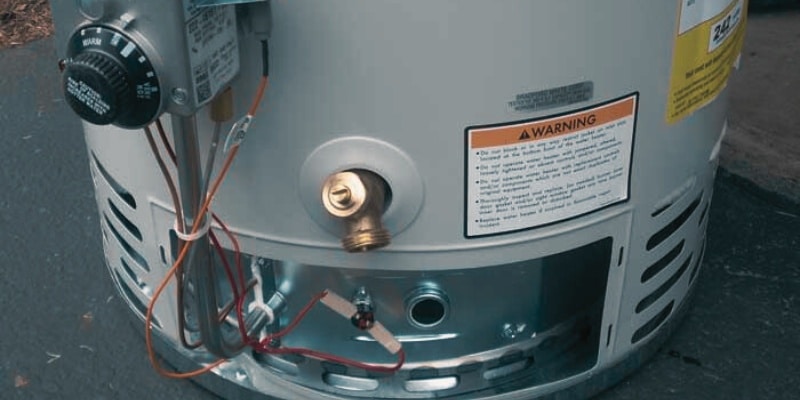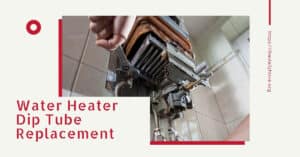If you’ve ever been shivering in the shower, you’ve likely given more thought to your home’s water heater than expected. These unsung heroes of comfort often go unnoticed until there’s a problem. Now, an innovative solution on the market promises not just warm showers but safety and efficiency, too: the FVIR water heater. But what exactly is an FVIR water heater, and why should it earn a spot in your utility closet—or perhaps more importantly, in your budget?
There’s no denying water heaters’ essential role in our daily comfort. Yet, despite their usefulness, these silent workhorses carry potential risks that often go unnoticed. It’s estimated that water heaters cause 400 house fires a year, tragically resulting in an average of 5 deaths. Startlingly, electric and gas-fired water heaters are all grouped together in these statistics, highlighting a universal risk inherent in these indispensable household appliances.
Safety has become a paramount concern in an industry marked by innovation, leading to revolutionary developments like the Flammable Vapor Ignition Resistant (FVIR) water heater. Unique in its construction and purpose, the FVIR water heater represents a voluntary industry shift championed by forward-thinking manufacturers and related associations keen on preempting regulatory mandates by setting elevated safety standards.
This proactive approach has ushered in a new era of home safety and efficiency, promising enhanced performance and peace of mind for homeowners. FVIR technology is more than just a technical upgrade; it’s a life-saving feature, expected to significantly reduce the number of fires, safeguarding properties and, more importantly, lives. So, how does this technology work, and what sets FVIR water heaters apart in a market crowded with appliances vying for your attention?
Let’s dive into the world of FVIR water heaters and explore the intricacies and implications of this remarkable innovation.
What is an FVIR Water Heater?
FVIR stands for Flammable Vapor Ignition Resistant. Quite a mouthful, right? But the concept is straightforward. These water heaters are designed to prevent the ignition of flammable vapors outside the unit.

Imagine someone accidentally spills gasoline near a water heater in a garage. A standard unit might ignite those fumes, causing a fire or explosion. Here, an FVIR water heater is the superhero, preventing such disasters.
How FVIR Water Heater Work
But how does FVIR technology manage to offer this level of protection? The secret lies in the nuanced and continuously evolving designs employed by different manufacturers, with innovations emerging almost yearly. Despite the variations, the core objective remains consistent across all FVIR gas water heaters: to contain flammable vapors within the burner compartment and, in the event of a flash fire, shut down the gas supply to the pilot and burner to prevent any external ignition.
A central feature common to almost all brands is the inclusion of a flame arrestor situated beneath the burner at the cabinet’s base. This critical component allows air and vapors to pass into the water heater while preventing a flash fire from escaping the compartment, thereby averting potential disasters.
Further enhancing the safety measures, some models are equipped with a specialized door designed to seal the vent or spark arrestor in the event of a flash fire. This additional line of defense ensures the flames are effectively contained within the unit.
Safety switches represent another advanced aspect of FVIR technology. These are designed to respond instantaneously by shutting off the gas in the combustion chamber if a flash fire occurs. This immediate action further guarantees the containment of the fire within the water heater, significantly reducing the risk of a secondary fire igniting in the surroundings.
Given these advanced safety features, standard non-FVIR water heaters have become a thing of the past. They are no longer manufactured or sold, making FVIR water heaters the new industry standard in home safety and efficiency. This universal shift underscores the industry’s commitment to safeguarding households against the often-overlooked dangers of conventional water heaters.
Benefits of Using an FVIR Water Heater
The introduction of FVIR technology has revolutionized safety standards in water heaters. But that’s not the end of the perks it offers.
Firstly, and most importantly, they greatly reduce the risk of fires related to flammable vapors. This feature is a lifesaver, especially in scenarios where your water heater is in a location that might be exposed to such vapors.
On top of safety, FVIR water heaters are champions of energy efficiency. They are designed to minimize heat loss, requiring less energy to keep your water warm. This efficiency is not only good for the planet but also for your monthly utility bills.
Cons of Using an FVIR Water Heater
While FVIR water heaters sound like a dream come true, they come with challenges.
As we approach nearly two decades since the pivotal shift in water heater technology, we must reflect on the journey and the challenges that persist with Flammable Vapor Ignition Resistant (FVIR) water heaters. While they ushered in a new era of safety and efficiency, they also brought a wave of confusion and misconceptions, especially concerning their installation and positioning.
Post-2003 Water Heater Configurations
Post-2003, water heaters have embraced a design transformation – all units now boast enclosed pilot chambers, classifying them as “Flammable Vapor Ignition Resistant.” This critical change, harmonized with updates in technology and plumbing codes, indicates that these appliances no longer necessitate an elevation of 18 inches off the garage floor. This practice was once standard but is now obsolete.
This shift, however, often becomes a source of confusion among homeowners and even inspectors. The pre-2003 era necessitated water heaters, particularly in garages, to be elevated to prevent the ignition of flammable fumes. This safety measure has etched itself so profoundly in practice that its redundancy post-2003 technology upgrade is frequently overlooked.
Dealing with Installation Quirks and Code Misinterpretations
For professional installers, this misunderstanding is a recurring hurdle. The evolution of water heaters hasn’t just been in terms of safety features; their physical dimensions have also changed. As a result, when replacing a water heater, installers frequently face situations where maintaining the old elevated position results in improper venting slopes due to the new tank’s size. This misalignment can impede the effective venting of carbon monoxide, a silent yet deadly threat.
The simple and often safest solution might be installing the unit directly on the floor, permitted and safe under current FVIR compliance. However, well-meaning inspectors sometimes enforce outdated practices on modern units, aiming to preserve homeowner safety, albeit based on antiquated standards. Such discrepancies, while rooted in safety, can ironically veer towards unsafe outcomes.
Cost Implications and Installation Adaptability
Moreover, the decision to install a water heater on a stand or directly on the floor is influenced by multiple factors, including, but not limited to, the cost implications of repiping, the condition of existing stands, and the requirements around vent/flue adjustments for proper installation.
The inconsistency in information and the application of outdated standards to modern technology complicates the decision-making process for homeowners. They are often caught in a crossfire of conflicting recommendations, which, although well-intentioned, are mismatched with current safety standards and technological advancements.
In practice, many professionals opt to continue installing FVIR water heaters on stands in garages. This approach is usually more cost-effective and circumvents the exhaustive explanations often required to justify a floor installation to those still anchored to pre-2003 standards. However, when certain conditions dictate – such as installation costs, size constraints, and the need to maintain a positive vent slope – placing an FVIR water heater on the garage floor is not just a compliant move but a safe, logical, and cost-effective one.
Understanding, adapting, and educating are crucial as we navigate the landscape of modern water heater installation. Professionals, inspectors, and homeowners must stay abreast of the evolving technology, embrace changes that reinforce safety, and adhere to practices that reflect current standards, not past ones. This collaborative approach ensures the safety of households and the efficiency and longevity of the appliances they depend upon.
The Turning Point in Water Heater Safety Standards
Residential water heaters have undergone a revolutionary change for enhanced safety and reliability. A significant shift occurred post-2003, marking a new era in water heater manufacturing. Post this pivotal year, water heaters began to be manufactured with FVIR compliance, indicating a fundamental redesign in their construction. What does this entail? The combustion chamber where the gas is ignited to heat the water is now meticulously sealed.
This change means that the traditional match method to light the water heater has become obsolete. Instead, homeowners must use the built-in pilot mechanism. This safety enhancement significantly reduces the risk of accidents involving flammable vapors.
The impact of this development is far-reaching, offering profound safety improvements. Thanks to these advanced protective measures, new water heaters are now significantly safer than those manufactured before 2003.
This wasn’t just a fad in appliance manufacturing; it marked a substantial shift in regulatory standards governing these household essentials. Effective July 1, 2003, a mandate required all water heater manufacturers to build their 30, 40, and 50-gallon atmospheric vent water heaters according to new government standards established by the American National Standards Institute (ANSI).
These rigorous standards were designed to prevent the accidental or unintended ignition of flammable vapors, such as those emitted by gasoline, which could be found in residential settings. The regulations targeted the real scenario of these vapors coming into contact with a water heater’s ignition source, contributing to preventable fires, injuries, and property damage.
Integrating FVIR technology into modern water heaters illustrates a committed effort to improve household safety and appliance efficiency. By understanding what FVIR is and its crucial role, homeowners can make informed decisions when purchasing water heaters, ensuring they choose models that adhere to the highest safety standards in the industry.






